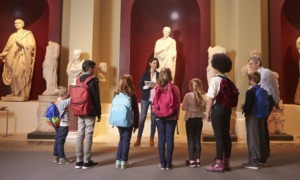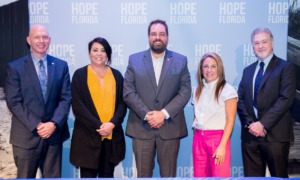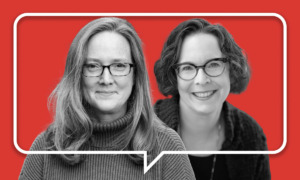At a recent session of a youth development program, during a Mad Libs activity that served as an icebreaker, one of the simple warm-up questions generated a disturbing response. Young people were asked to name a course they take in school. After a couple of usual answers (“math,” “social studies”), someone shouted, “test prep.” All of the kids agreed that this was indeed a course at their schools.
It’s been seven years since No Child Left Behind (NCLB) became national education law, and few U.S. schools remain untouched by the test score frenzy that this anecdote highlights. Everyone who spends time in schools has witnessed a seismic shift since NCLB kicked in. Teachers report serious pressure to reallocate their time with students, moving from instruction and discussion toward rote review and, yes, test prep. Announcements about the upcoming state math and English exams are posted in school hallways and even on fences outside schools. Students feel and talk about the extreme test anxiety, recognizing how high the stakes are for them, their teachers and their principals.
I am in favor of accountability, at least as much as the next person. But really, I worry about what lessons our children are learning, thanks to all of this emphasis on test scores as the single indicator of their and their schools’ success. Not to mention how much less real math and English they are being taught during the weeks before the big tests.
By contrast, I have been heartened to see the growing number of youth development program evaluations that have documented, via multiple measures, more complex results that I judge to be just as important to adult success as numeracy and literacy.
In reviewing these evaluations, I have become enamored particularly of improved work habits as a positive outcome: the development of real-world skills such as goal-setting, time management, problem-solving, persistence, project completion and teamwork. This set of outcomes started showing up in out-of-school-time program evaluations about 15 years ago, and, over the intervening years, many reports have confirmed that program participation by young people increases the development of good work habits – the kinds of behaviors that contribute to success in college and careers.
At a time that many schools are narrowing their curricular focus and instructional practice, many youth development programs are expanding their emphasis on enriched learning that produces these habits. One example is project-based learning, which offers young people opportunities for choice, deep engagement and the nurturing of positive peer relationships. A key feature of project-based learning is the role of adults as facilitators, serving more as coaches than as teachers or leaders. A phrase that has moved into the youth development lexicon is “the guide at the side, not the sage on the stage.”
We find exemplars of this approach across the youth development field. There are specialized programs like Rocking the Boat, which uses maritime apprenticeships to promote positive youth development; Youth Communication, which focuses on journalism; and the Education Video Center.
In addition, many comprehensive youth development programs incorporate project-based learning as a preferred methodology as they engage young people in theater productions, sports leagues, youth orchestras and choruses, service programs and youth-run radio stations. This diverse set of programs shares a common purpose: to help young people identify potential lifelong interests, even as they pursue more traditional school-based learning.
These advances in the fostering of positive work habits involve the very skills that business leaders are seeking in employees – the “21st century skills” that combine cognitive and interpersonal assets. In July, for example, our community schools team at The Children’s Aid Society received the results of a three-year evaluation of our after-school program in six New York City middle schools. The findings indicate that regular participants, compared with non-participants, showed greater academic gains, better school attendance, more extensive use of the Internet and the school library for research, and more engagement in community service. The program that produced these findings espouses a youth development and academic enrichment approach.
Suffice it to say that no test prep sessions appear on the daily schedule.






























